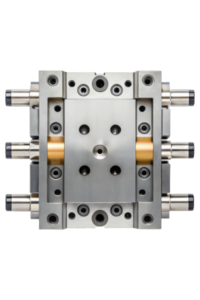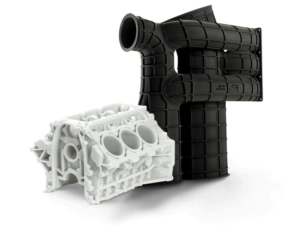Optimizing Design: Enhancing Performance with High-Performance Plastics Instead of Metal
Key Points:
- High-performance plastics can reduce weight and cost while maintaining mechanical performance.
- Part count reduction simplifies designs and further reduces weight.
- Elimination of secondary operations saves time and expenses.
- Injection molding improves production cost and rate.
- Prototyping and tooling costs for injection molding are not prohibitive.
- Progress necessitates reevaluating material choices.
Design and manufacturing professionals constantly strive to enhance the performance of their products, whether it’s improving fuel efficiency in transportation, enhancing comfort in wearable devices, or increasing the efficacy of medical equipment. In this pursuit, one crucial question arises: “Are we using the optimal material for this application?”
Material substitutions require careful consideration. The implications of replacing a material in a core component are significant, as entire factories and supply chains can be tied to the original material selection. However, to achieve meaningful functional and financial improvements, material choices must be objectively reevaluated.
Advantages of High-Performance Plastics
While high-performance plastics cannot replace metal alloys in all applications, there are numerous scenarios where metals cannot fulfill the roles of polymers. It is within this space that polymers and metals can perform the desired functions at a commercially viable manufacturing cost. When transitioning from metal to plastic components, several avenues can be explored:
- Evaluate simple material substitutions: Assess whether an engineering-grade polymer with a similar physical/geometrical design can offer meaningful improvements. Although metals and high-performance plastics have distinct mechanical properties, suboptimal metal designs can potentially be substituted with lighter and less expensive plastic components.
- Consider the advantages of molded plastics: Plastic injection-molded components can be complex, cost-effective, and produced at high rates. This allows designers to reduce part count by consolidating functions into a single component. This approach saves weight, production time, logistics, and ultimately reduces costs. Additionally, molded polymers offer aesthetic flexibility through complex organic shapes and molded-in colors, eliminating the need for secondary operations. The wide range of mechanical, physical, and chemical properties of polymers unlocks new possibilities for innovative design.
- Combine the best of both worlds: Polymer components with overmolded inserts can leverage the benefits of injection molding while incorporating metal features in critical areas such as threads, embedded wiring, metal tubing, heat dissipation, or aesthetics.
Detailed Analysis and Implementation
Once the preliminary analysis is complete, the detailed work begins. Designers must simulate, test, and validate the static and dynamic performance of the component under anticipated environmental conditions. Simultaneously, the manufacturing team plans the component substitution, estimating tooling, training, production validation timelines, and capital and operating costs. The commercial team merges data from the design and manufacturing teams to calculate the expected return on investment (ROI) for the substitution.
Frequent Substitution of High-Performance Plastics for Metal
Many products that once relied on metal have successfully transitioned to superior injection-molded plastic components. Consumer products, medical devices, sporting goods, and automotive components provide numerous examples of significant improvements achieved through high-performance plastic substitutions. However, numerous untapped applications with lower conversion costs still hold immense potential.
For instance, in the electrical industry, we have assisted clients in converting sheet metal assemblies with multiple fasteners and manual assembly into sculpted single components that require no additional assembly, painting, or electrical insulation. This approach reduces per-component costs, assembly time, and simplifies the entire manufacturing logistics chain while delivering superior end products.
Injection Molding Tools: Cost-Effective for Prototypes and Short-Run Production
Tooling costs significantly impact the benefit-to-cost calculation. Quickparts offers tooling at a fraction of the cost of hardened steel tools, producing end products within days for simpler projects and two to three weeks for complex ones. This accelerated timeline generates cash for customers quickly and provides early feedback on the viability of the substituted component. If further iterations are necessary, modifications to prototype tooling and process parameters remain manageable, keeping costs under control and projects on track. When combined with manufacturing gains, end-use enhancements, and lower costs, investment in injection molding tools becomes a worthwhile endeavor.
In Summary: High-Performance Plastics as Metal Substitutes
Whether it’s enhancing the performance of sporting equipment, improving the aesthetics of kitchen appliances, or reducing costs and weight in aircraft interior components, plastic injection molding has repeatedly demonstrated its viability as a substitute for metal in demanding applications. When seeking methods to improve product performance, consider every area where a plastic component could offer performance or economic advantages. The benefit-to-cost ratio often proves highly favorable.


